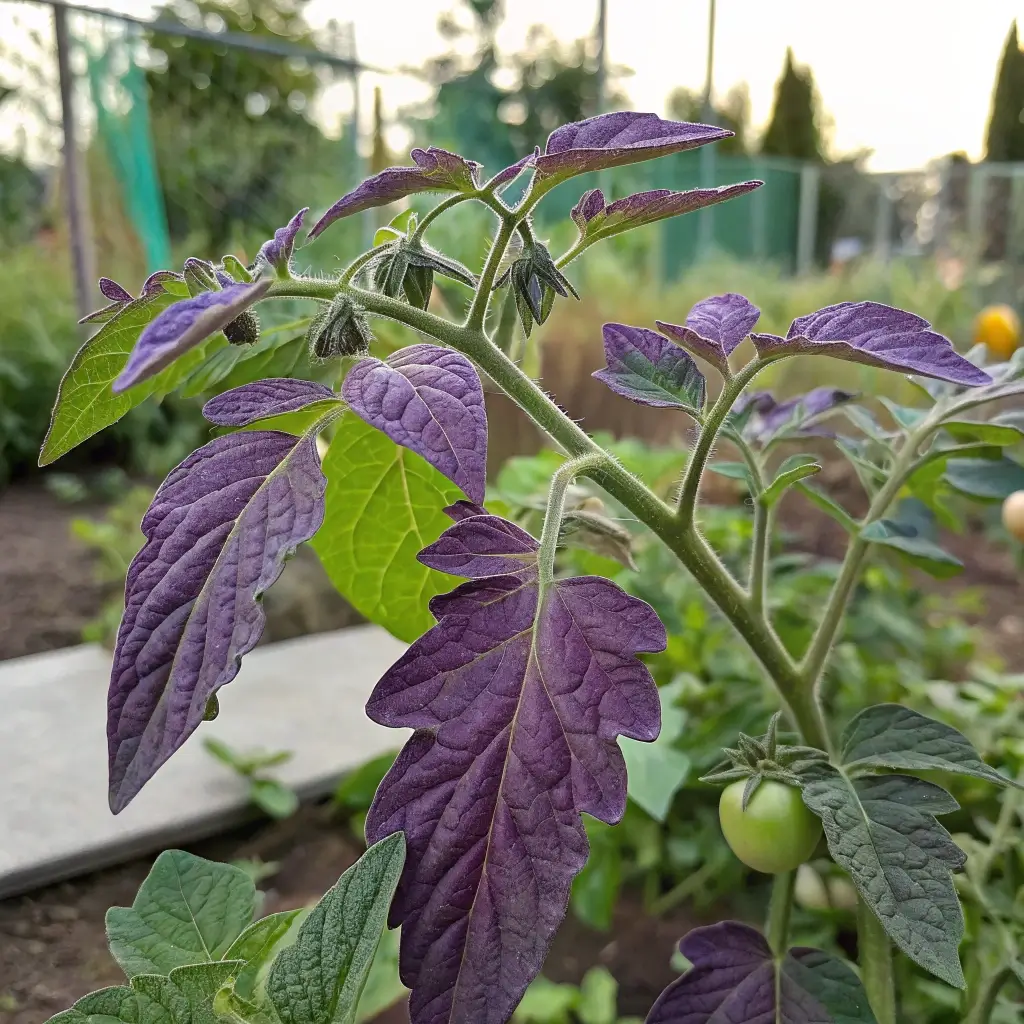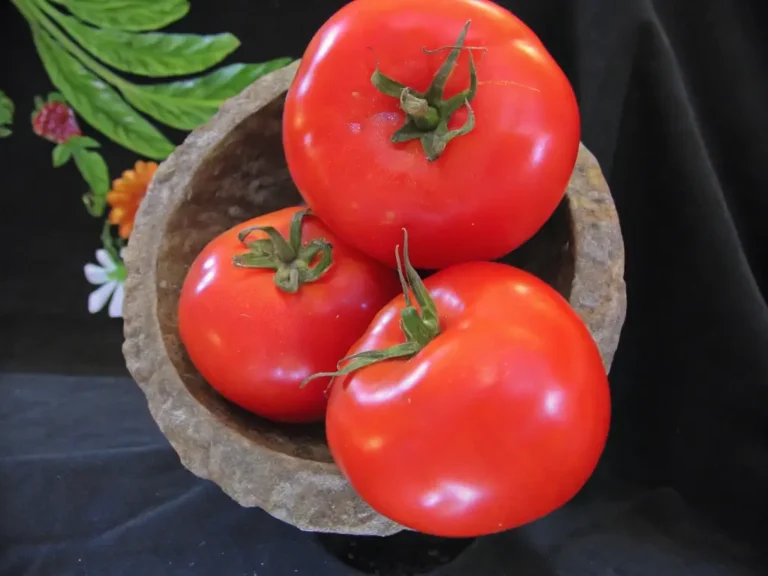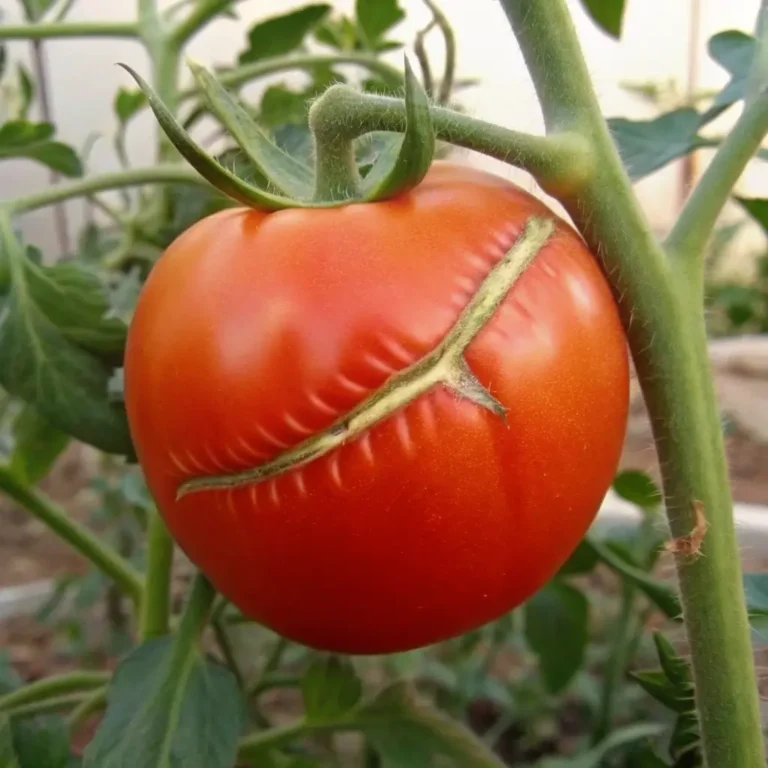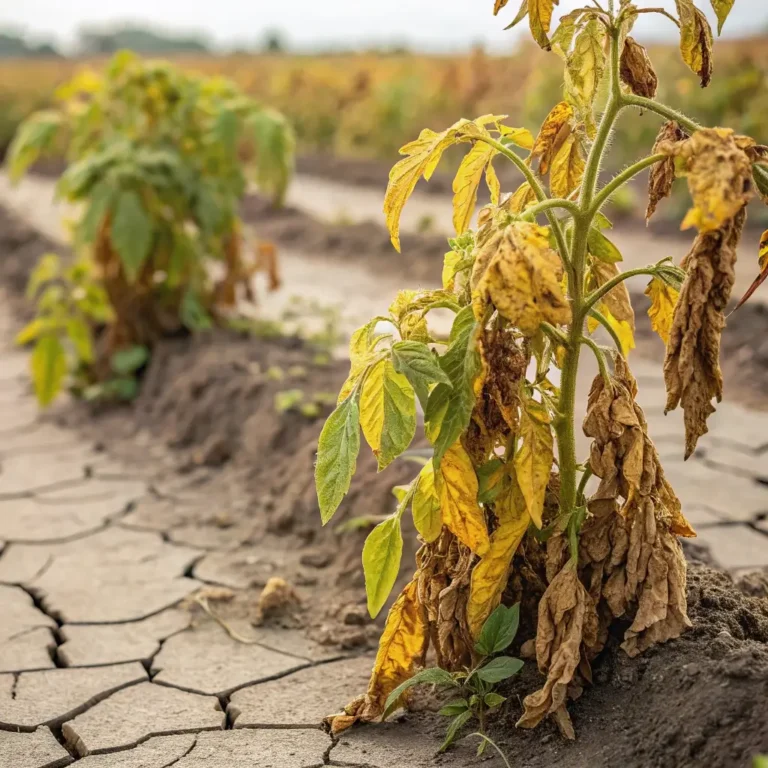8 Reasons Why Your Tomato Leaves Are Turning Purple (and Fixes!)
Table of Contents
Introduction
Did you know that over 70% of home gardeners experience problems with their tomato plants each growing season? One of the most perplexing issues is when tomato leaves turn purple – a condition that often leaves gardeners confused and worried about their crop’s health. Whether you’re a seasoned gardener or just starting your first vegetable patch, discovering purple leaves on your tomato plants can be concerning. In this comprehensive guide, we’ll explore the 8 reasons why your tomato leaves are turning purple and provide practical solutions to get your plants back to their vibrant green state.
Identifying Purple Leaf Symptoms
Before diving into the causes, it’s important to correctly identify the issue:
- Color Range: Purple discoloration can range from light lavender to deep eggplant
- Location: Often appears on leaf undersides, margins, or stems
- Pattern: May affect new growth first or appear as purple veining
- Progression: Can spread from a few leaves to the entire plant if left untreated
Take clear photos of affected leaves to compare with examples or share with local extension offices for confirmation.
1. Phosphorus Deficiency
The most common reason for purple tomato leaves is phosphorus deficiency. Phosphorus is crucial for energy transfer, photosynthesis, and root development. When plants can’t access enough phosphorus, they produce excess anthocyanins, causing that distinctive purple hue.
The Fix: Apply a phosphorus-rich fertilizer with an NPK ratio higher in the middle number (like 5-10-5). For an organic approach, incorporate bone meal into your soil at a rate of 1 pound per 10 square feet. Improvement should be visible within 1-2 weeks.
2. Cold Soil Temperatures
Tomatoes thrive in warm soil (ideally 65-85°F). When soil temperatures drop below 55°F, phosphorus becomes less available to plants – even if it’s present in the soil. This condition, known as cold-induced phosphorus deficiency, is particularly common in early spring plantings.
The Fix: Use black plastic mulch to warm soil before planting. For established plants, add a layer of organic mulch to insulate roots. Consider protective row covers at night if temperatures consistently drop. Patience is key – as soil warms, symptoms typically resolve naturally.
3. pH Imbalance
Tomatoes prefer slightly acidic soil with a pH between 6.0 and 6.8. When soil is too acidic (below 5.5) or too alkaline (above 7.0), nutrients including phosphorus become chemically bound and unavailable to your plants.
The Fix: Test your soil pH with an inexpensive kit. For overly acidic soil, incorporate garden lime according to package directions. For alkaline soil, add elemental sulfur or organic matter like peat moss. Re-test after 2-3 weeks to confirm improvement.
4. Pest Damage
Certain pests like psyllids, aphids, and thrips can trigger a purple discoloration response when they feed on tomato plants. The “psyllid yellows” disease specifically causes a purple tint along with upward-curling leaves.
The Fix: Inspect plants carefully, especially under leaves. For minor infestations, spray plants with a strong stream of water to dislodge pests. For more serious cases, apply insecticidal soap or neem oil, following label directions carefully. Introduce beneficial insects like ladybugs for long-term control.
5. Viral Infections
Several tomato viruses, including Tomato Purple Leaf Virus and certain strains of Tomato Spotted Wilt Virus, can cause purple discoloration. Unlike nutrient deficiencies, viral symptoms often appear alongside other issues like stunted growth, leaf distortion, or unusual patterns.
The Fix: Unfortunately, there is no cure for viral infections in plants. Remove and destroy infected plants to prevent spread. Disinfect gardening tools with a 10% bleach solution, practice crop rotation, and choose virus-resistant varieties for future plantings.
6. Stress from Transplanting
Tomato seedlings often develop purple leaves after being transplanted outdoors. This transplant shock occurs when plants experience dramatic environmental changes, leading to temporary nutrient uptake issues.
The Fix: Harden off seedlings gradually before transplanting by exposing them to outdoor conditions for increasing periods over 7-10 days. After transplanting, protect plants with row covers and water consistently. Add a diluted seaweed solution to reduce transplant stress. Most plants recover within 2 weeks.
7. Genetic Factors
Some tomato varieties naturally produce purple pigmentation in their leaves, stems, or fruit. Cherokee Purple, Black Krim, and certain heirloom varieties may show purple coloration that’s completely normal and not a sign of health problems.
The Fix: No action needed! Reference your seed packet or plant tag to determine if purple coloration is expected for your variety. If the plant is otherwise growing vigorously with normal fruit production, enjoy this unique characteristic.
8. Magnesium Deficiency
Though less common than phosphorus deficiency, lack of magnesium can cause older leaves to develop purple tints along with yellowing between leaf veins (interveinal chlorosis).
The Fix: Apply Epsom salts (magnesium sulfate) as a foliar spray by dissolving 1 tablespoon in a gallon of water and spraying onto leaves. Alternatively, sprinkle 1-2 tablespoons around each plant’s base and water in well. Results should be visible within 1-2 weeks.
Prevention Tips
- Test soil before planting and amend accordingly
- Use balanced fertilizers throughout the growing season
- Maintain consistent soil moisture with proper watering
- Choose varieties suited to your growing zone
- Practice crop rotation to prevent pest and disease buildup
- Start seeds indoors 6-8 weeks before last frost for stronger transplants
Conclusion
Purple leaves on tomato plants often signal correctable growing conditions rather than a death sentence for your crop. By identifying the specific cause and applying the right solution, you can restore your plants to health and ensure a bountiful harvest. Remember that prevention through proper soil preparation and maintenance is always easier than correction. Have you experienced purple leaves on your tomatoes? Which solution worked best for your garden? Share your experiences in the comments below!
FAQs
Can tomatoes with purple leaves still produce fruit?
Yes, if the underlying cause is addressed promptly, plants can recover and produce a normal harvest. Severe or prolonged stress may reduce yield or fruit quality.
How quickly should I expect to see improvement after treatment?
For nutrient deficiencies, improvement typically begins within 7-14 days. Temperature-related issues may take longer to resolve as they depend on seasonal changes.
Are purple-leaf tomato plants safe to eat?
Absolutely! Purple discoloration doesn’t affect fruit safety, though severe nutrient deficiencies may impact flavor or texture if left uncorrected.
Should I remove purple leaves from my tomato plants?
Unless leaves show signs of disease or pest damage, it’s better to leave them on the plant while addressing the underlying cause. They’ll still contribute to photosynthesis.
Can companion planting help prevent purple leaf issues?
Yes! Planting tomatoes with calcium-accumulating companions like borage or comfrey can improve soil health. Marigolds repel many tomato pests that might cause purple discoloration.







